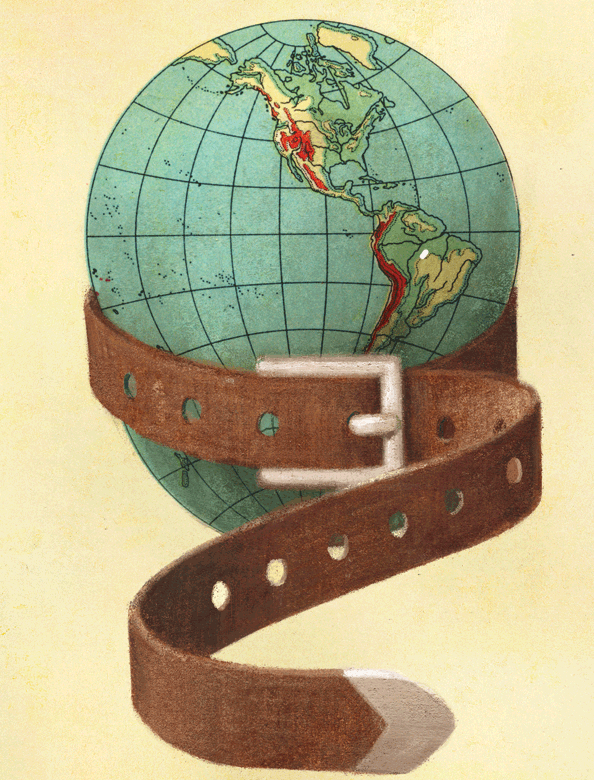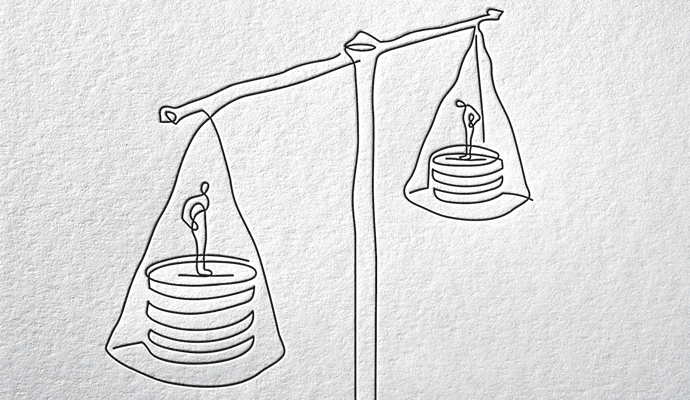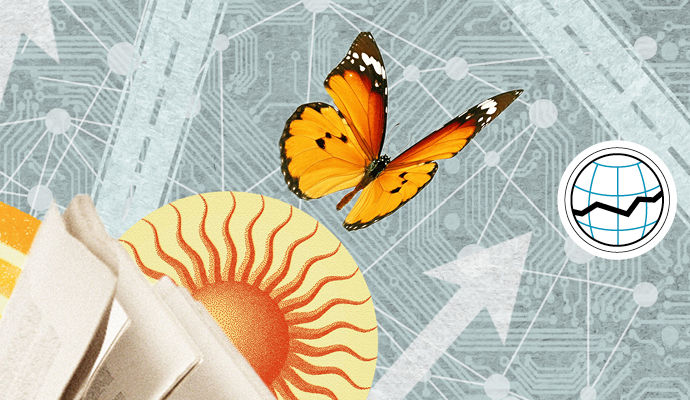Best Business Books 2015: Economics
The (Very) Political Economy
A version of this article appeared in the Winter 2015 issue of strategy+business.
Martin Wolf
The Shifts and the Shocks: What We’ve Learned — and Still Have to Learn — from the Financial Crisis (Penguin Press, 2014)
Steve Fraser
The Age of Acquiescence: The Life and Death of American Resistance to Organized Wealth and Power (Little, Brown, 2015)
Dirk Philipsen
The Little Big Number: How GDP Came to Rule the World and What to Do about It (Princeton University Press, 2015)
In this, the sixth year of global expansion, the crisis of 2008 is slipping into history, and steady but unsatisfying growth has become the new norm. That’s been comparatively good news for companies, stock markets, and workers. The news has been less good for the economics book industry. The debacles of 2008 and 2009 gave rise to scores of well-written, passionately argued books that described those debacles’ origins, documented their fallout, and provided advice on how to prevent the next crisis. But the pipeline has slowed to a trickle. This year’s lot, it must be said, does not measure up to the standards of previous years. Nonetheless, some of the new books are provocative. And this year, several of the books that caught my eye revolved around politics. That’s not entirely surprising. The 2016 U.S. presidential campaign has long since started. Last year’s book of the year, Thomas Piketty’s Capital in the 21st Century, helped income inequality become a matter of persistent global political debate. And so we’ve seen a notable increase in books that aim to tell politicians what they should do about the greatest economic challenges we face, and that point out fissures over economics within countries, and within political parties.
Crystal Clear World Vision
By far the most thoughtful and insightful of this year’s crop is Martin Wolf’s The Shifts and the Shocks: What We’ve Learned — and Still Have to Learn — from the Financial Crisis, and it is my pick for 2015’s best business book on economics. Wolf, who is British and based in London, is no card-carrying partisan in the U.S. political wars. As the chief economics commentator of the Financial Times (and an especially trenchant one), he holds no particular brief for political parties, on either the right or the left. Wolf’s general view is that President Obama and his counterparts in other wealthy countries were far too timid in confronting the crisis and its lingering effects. His implicit message, although it is never stated in such partisan terms, is that, in the U.S., ideologically driven demands by congressional Republicans for federal spending cuts in the midst of a deep recession have made matters much worse than they needed to be. Austerity, he argues, has been similarly self-defeating in Europe.
Wolf brings a clarity to the discussion of economic issues that has been sorely lacking in the United States. One of the most lamentable aspects of U.S. public debate has been the tendency to politicize economics. Almost every argument or article is slammed by paid critics as “liberal” or “conservative,” and the comments of official spokespeople are likely to receive far more public attention than the nuanced research of economists. Wolf’s critique transcends such limitations. His great contribution is to look far beyond U.S. borders and treat the crisis as the international event it was.
Wolf starts by emphasizing two facts that were largely ignored in the political dickering between 2008 and 2011 in Europe as well as in the United States. One is the sheer scale of the catastrophe, a scale that public officials and central bankers were slow to recognize and to admit. This was no ordinary recession; 2009 was the first year since World War II in which the global economy shrank. In both the United States and the United Kingdom, Wolf points out, gross domestic product in 2011 was a whopping 13 percent less than it would have been had economic growth continued at its average rate from 1980 to 2007. The other important fact: Not all economic downturns are the same. As was documented by Carmen M. Reinhart and Kenneth S. Rogoff in their 2009 book, This Time Is Different: Eight Centuries of Financial Folly, economic downturns associated with financial crises tend to hit government finances much harder than garden-variety recessions. Tax revenues plummet, even as spending for bank bailouts, unemployment benefits, and income-support programs expands. In the United States, Wolf points out, “the fiscal costs of this event rival only those of the Second World War.” The U.S. annual budget deficit soared from US$161 billion in 2007 to $1.4 trillion in 2009.
Such severe conditions, Wolf insists, called for a very strong government response. Yet in almost all the high-income countries, governments were spooked by large budget deficits. And when they avoided additional spending, they helped drag out the very economic conditions that were depressing tax revenues. The governments left it to central banks to fight the downturn with easy money while tightening fiscal policy. This, Wolf asserts, has brought only a sluggish economic revival while potentially creating dangerous new financial excesses. “The decision to tighten fiscal policy after 2010 was almost certainly premature and unwise,” he writes. “It would have been better to rely more on fiscal policy and less on monetary policy.” In 2015, Barack Obama might agree with this statement, but David Cameron and Angela Merkel assuredly would not.
Leaving central banks to fight the downturn with easy money while tightening fiscal policy has brought only a sluggish economic revival.
But now we are here. And here, Wolf emphasizes, is not a good place. Most major economies are growing more slowly than they did in the years prior to 2007, far too slowly to recover the output lost in the depths of the downturn. In the U.S., he points out, it would take 10 years of economic growth at a 4 percent annual rate to make up for all the output that has been forgone since 2007; the U.K. would have to grow at 5 percent a year for a decade to achieve the same. This is implausible, particularly because low rates of labor-force expansion and an aging population are likely to bring slower economic growth in the future. “It now looks as though crisis-hit economies might never regain pre-crisis trend levels of output or even their pre-crisis rates of economic growth,” Wolf warns.
This is a warning you won’t hear from your local politician. Nor is Wolf’s call to move the world economy closer to its potential by making “an attempt to get a bigger recovery now” receiving serious consideration anywhere, even though the alternative of keeping fiscal policy tight and monetary policy loose clearly is not doing the trick. Some central banks have made use of monetary policies that are quite radical, at least by conventional standards, but in no wealthy country is the government using its spending powers as aggressively as Wolf would like to see. On the contrary, the ruling orthodoxy everywhere has called for fiscal rectitude, and governments are striving to bring their budget deficits under control. This, Wolf argues, is likely to bring about “an enduring slump in high-income countries.”
Why America Takes It
Wolf’s argument is controversial, but it is rigorous and coherent, and it laments a kind of fatalism among policymakers. In The Age of Acquiescence: The Life and Death of American Resistance to Organized Wealth and Power, Steve Fraser, a historian who specializes in Wall Street and the labor movement, likewise finds the political response to rapidly changing economic conditions lacking. The Age of Acquiescence is a comparative history of the U.S. in the 1890s and the 2010s, two periods marked by falling worker incomes and rising income disparities. Back in the Gilded Age, the expansion of corporate power brought a popular reaction that led to the reforms of the Progressive Era, such as the income tax and antitrust laws, and a suspicion of big business that endured long enough to enable Franklin Delano Roosevelt to push through Social Security, the National Labor Relations Act, and a host of other measures intended to aid workers. Fraser aims to explore why, in the 21st century, the U.S. political system has offered negligible resistance to rising corporate power.
This could have been an important book, for the question Fraser asks is a substantial one. But The Age of Acquiescence is not up to the standards of Fraser’s previous work, which includes a biography of labor leader Sidney Hillman and a history of Wall Street. It contains no primary research, and the author’s secondary sources are heavily slanted toward historians who are sympathetic to his thesis. He shows comparatively little familiarity with recent economic research, either that on the Gilded Age — about which many economic historians have written — or that on recent decades. And many of his arguments are excessively polemical. He argues, for example, that the 1981–83 recession was “perpetrated” by Paul Volcker, as if the former Federal Reserve Board chairman deliberately ignored options that might have extirpated double-digit inflation painlessly.
Whereas Wolf expands the lens to take in a global perspective, Fraser is curiously myopic. He writes about the United States as if the rest of the world does not exist. His discussion of the weakness of the labor movement offers an example. Yes, U.S. unions are in steep decline. But the share of the workforce represented by unions has declined in almost all high-income countries, except those in Scandinavia, which suggests that organized labor’s fall is not just a matter of corporate pressure and weak U.S. government enforcement of labor laws, as Fraser would have us believe. It may well be that workers in the service and information industries, where much employment is now concentrated, don’t see a solution to their workplace problems in a union contract that sets staffing levels and protects less able colleagues from dismissal.
Fraser displays a longing for the good old days and a great deal of condescension toward the members of the U.S. working class who are his ostensible heroes. Fraser clearly thinks millions of working-class voters chose Ronald Reagan only because the Democrats ignored them: “Legions of working people…had been abandoned not only by the government but by the political machinery their forebears had created to help them cope.” He cannot admit the possibility that such individuals knowingly chose Reagan because they perceived that the New Deal order — the subject of another Fraser book — had grown sclerotic and rigid. Yet the questions Fraser raises — and his reminder of how the nation answered many of them a century ago — justifies our attention.
Better Measures of Economic Health
Dirk Philipsen’s The Little Big Number: How GDP Came to Rule the World and What to Do about It deals with another aspect of how the practice of economics meets politics: what to do about climate change. Philipsen, a fellow in ethics at Duke University, purports to be writing a history of national income accounting. The “big number” of his somewhat unfortunate title is gross domestic product, or GDP. The first half of the book offers a thorough explanation of how the statistical concepts behind GDP were developed, mainly in the 1930s and 1940s. But after pointing out many of the conceptual problems with GDP, he climbs on a high horse. “However useful its data may have been in capturing volume of output, GDP needs to be exposed as a measure that, in the twenty-first century, is both primitive and dangerous,” he proclaims. “GDP as primary guide to economic and social success is bankrupt.”
The limitations of GDP are obvious and have been known for many years. Unpaid housework is not counted in national income. Vehicle repairs following a car wreck make GDP bigger, but, unless they result in loss of work, the pain and suffering of the driver do not make GDP smaller. Each quarter’s GDP growth estimates are hugely affected by statisticians’ choices about how to adjust for blizzards, how to calculate the useful life of machinery, and whether to treat the cost of running a laboratory as an investment or a current expense. Simon Kuznets, the economist who developed many of the statistical series underlying GDP, frequently spoke of the concept’s limitations. The World Bank affirmed in 1982 that income statistics do “not measure items that are important to welfare in most societies,” and urged that they be used in conjunction with data on life expectancy, infant mortality, and literacy.
For Philipsen, the biggest shortcoming of GDP is the impact that this measure — or the pursuit of it — has on the environment and the climate. The quest for ever-higher GDP, in his view, rewards activities that are not sustainable (drilling for oil) and discourages activities that are sustainable (walking to work). “Today’s collective challenge is how to make intelligent and equitable use of what we have,” he writes. “Broadly speaking, the new objective needs to be quality, not quantity.”
It’s hard to quibble with such a desire. But improving the way we measure a nation’s economic health is harder than Philipsen suggests. The ways to extend or supplement our current GDP measure are almost unlimited. What they have in common is that they require weighting variables whose importance is highly subjective and quite individual.
For example, economist Richard Easterlin has observed, on the basis of extensive survey data, that “most people could increase their happiness by devoting less time to making money, and more to nonpecuniary goals such as family life and health.” Should we adjust GDP downward to account for the loss of happiness entailed in producing it? George Gilder, the popularizer of supply-side economics in Ronald Reagan’s day, pointed out that divorces “tend to expand the national income by increasing the use of housing, fast foods, day-care centers, and domestic help.” Should we adjust GDP for changes in the divorce rate? More recently, statistical services in a number of countries have tried to figure out how GDP might reflect the loss of species and the use of nonrenewable resources. This turns out to be all but impossible to do in any rigorous way: Given that planet Earth contains a very large amount of iron, it is not obvious that mining a ton of iron today affects the amount available tomorrow and, if it does, it is not clear how that effect should be quantified.
Each of these books aims to jolt readers out of complacency about economic growth, albeit for different reasons: that there is too little (as Wolf argues), that it is shared too unequally (as Fraser laments), or that it is too reckless (as Philipsen charges). Each is pessimistic about the ability of the political system to address the problems it highlights. But it may well be the case that the authors’ expectations are unrealistic. It may not be feasible to achieve the faster economic growth Martin Wolf would like to see. A variety of factors, including globalization and technological change, may have made it impossible for government to divide income gains as equally as Steven Fraser might like without driving capital away. Progress in addressing the causes of climate change is more likely to come in dribs and drabs than with the sort of sweeping reforms Dirk Philipsen thinks appropriate. The world of the 21st century is the only one we have, and it is futile to wish for another.
Reprint No. 00379
Author profile:
- Marc Levinson is the author of several books, including The Box: How the Shipping Container Made the World Smaller and the World Economy Bigger (Princeton University Press, 2006). He is working on a history of the 1970s.







